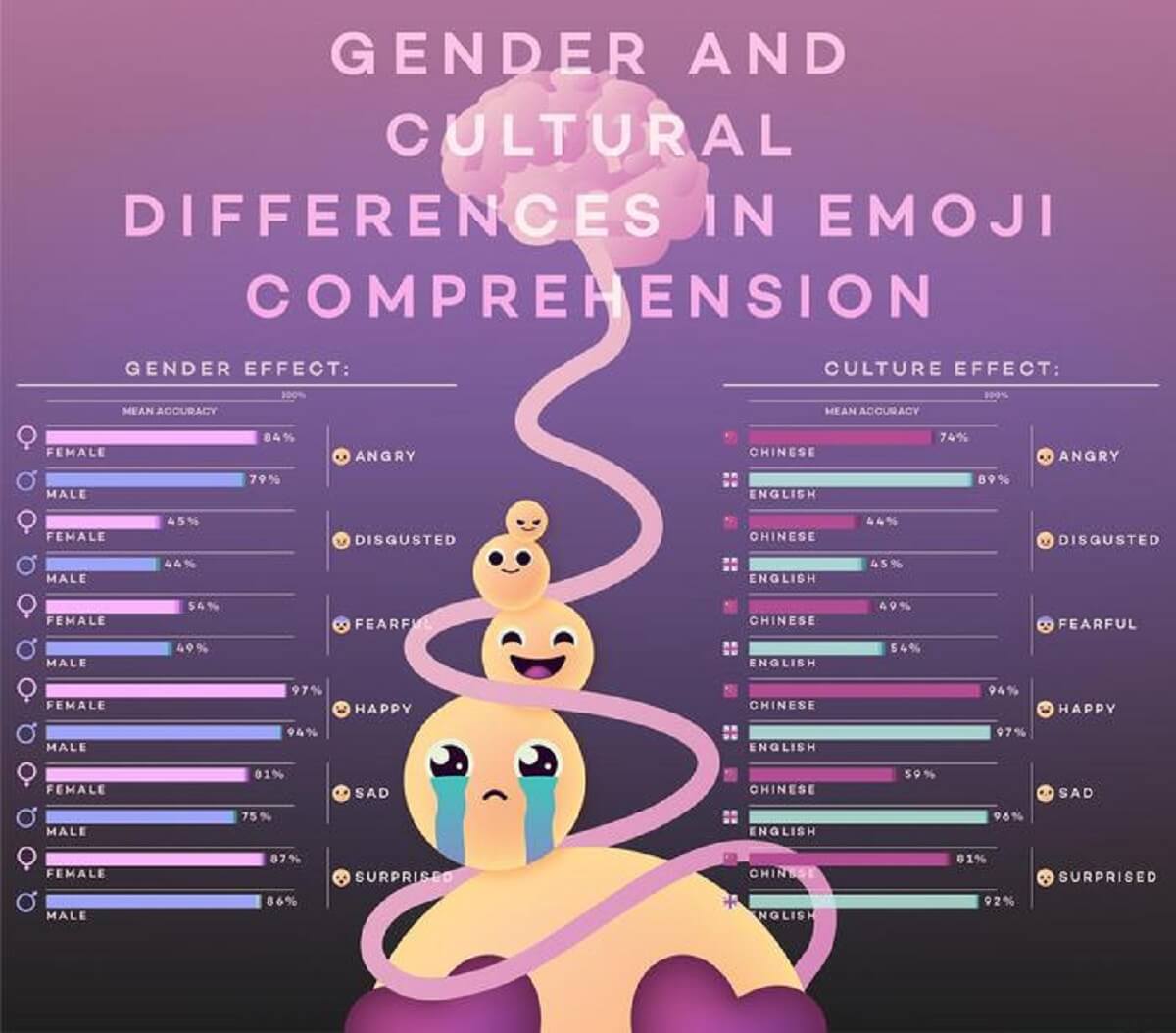NOTTINGHAM, United Kingdom — Our interpretation of emojis varies significantly based on our gender, age, and cultural background, new research reveals. A collaborative effort between British and Chinese scientists is revealing how different demographics perceive emojis worldwide. Their study uncovered that even our geographical location plays a crucial role in our understanding of specific emojis.
The findings indicate that older individuals are less likely to correctly interpret the intended meanings of some emojis, while women are more likely than men to align with the intended interpretations of others. The study evaluated participants’ responses to emojis representing happiness, disgust, fear, sadness, surprise, and anger. Emojis, which are stylized representations of facial expressions conveying various emotions, add both emotional depth and potential ambiguity to digital messages.
However, these interpretations are not universal, leading to potential misunderstandings in electronic communication.

A research team from the University of Nottingham engaged 523 adults from China and the United Kingdom. Just over half (51%) of the participants were women (49% male), and their ages ranged between 18 and 84. The study focused on six basic emojis from Apple, Windows, Android, and WeChat platforms, assessing how accurately participants matched these emojis with their intended emotional labels.
Results show a decrease in matching accuracy with age, particularly for emojis depicting surprise, fear, sadness, and anger. Female participants are more likely than males to correctly interpret emojis conveying happiness, fear, sadness, and anger. Additionally, U.K. participants generally outperform their Chinese counterparts in matching emojis to their assigned labels, except for the disgusted emoji.
The researchers acknowledge limitations, noting the study’s focus on only six types of emojis may not fully represent real-life usage. For instance, the emoji chosen to signify disgust is sometimes confused with a “confounded face,” illustrating the challenges in universally classifying emotions in emojis.
The study emphasizes the critical role of context in emoji interpretation, highlighting that emojis may not always convey the intended emotions across different cultures or demographics. It suggests that future research should explore a broader range of emojis and consider individual differences in interpretation both within and beyond specific contexts.
“Emoji are an important substitute for non-verbal cues such as facial expressions in online written communication. So far, however, little is known about individual differences regarding how they are perceived,” says Dr. Hannah Howman, a lead author of the study from the University of Nottingham, in a media release.
“The results of our study suggested that all of the factors under investigation – gender, age, and culture – had a significant impact on how emoji were classified. The current results have important implications when considering emoji use in online communication, for example, with conversation partners from different cultures or of different ages.”
The findings are published in the journal PLoS ONE.
You might also be interested in:
- Messages from your doctor may soon include emojis, which could be a good thing
- New world language? Nonverbal, universal system of communication discovered
- Fake smiley face? People often use emojis to mask their negative feelings
- Debilitating Phone Pain: Woman Says Life Was Ruined By Texting, Scrolling
SWNS writer James Gamble contributed to this report.
